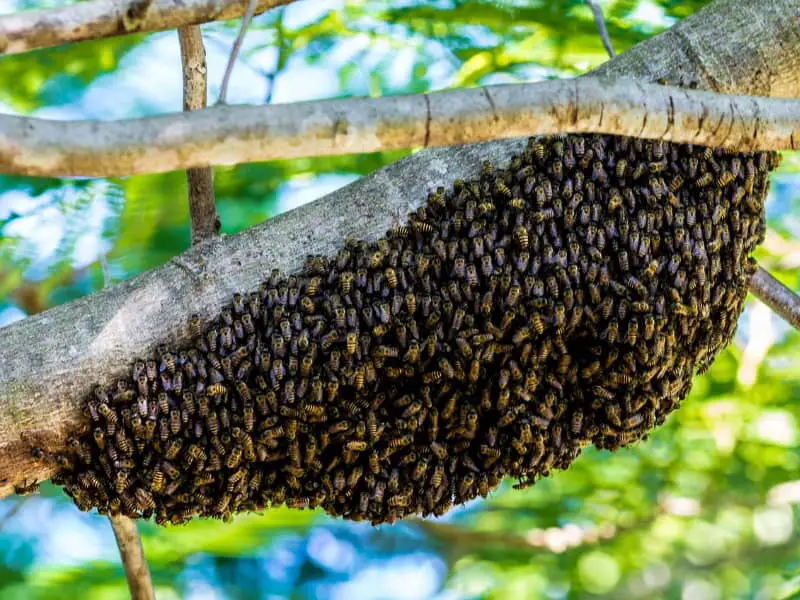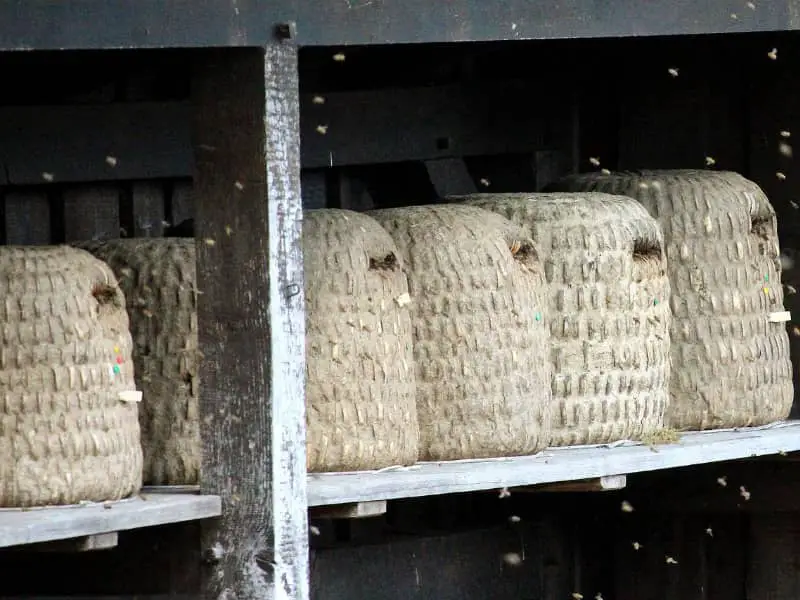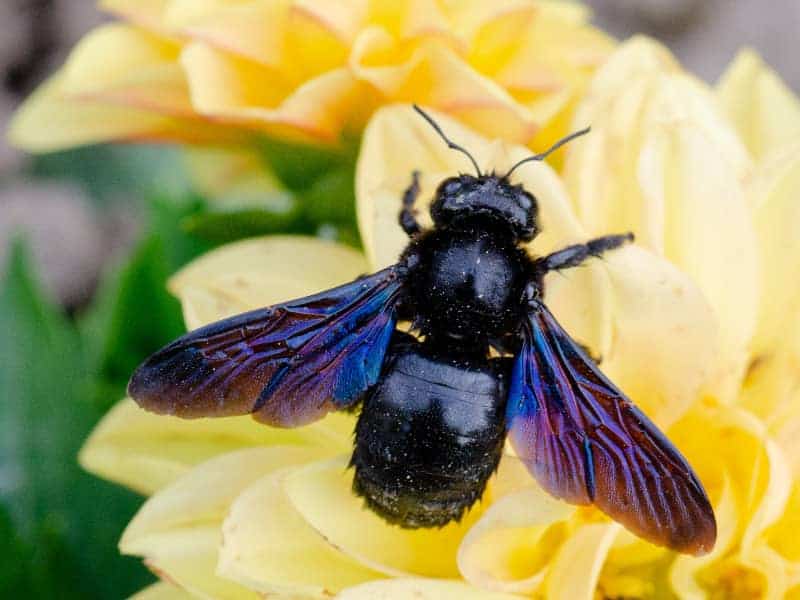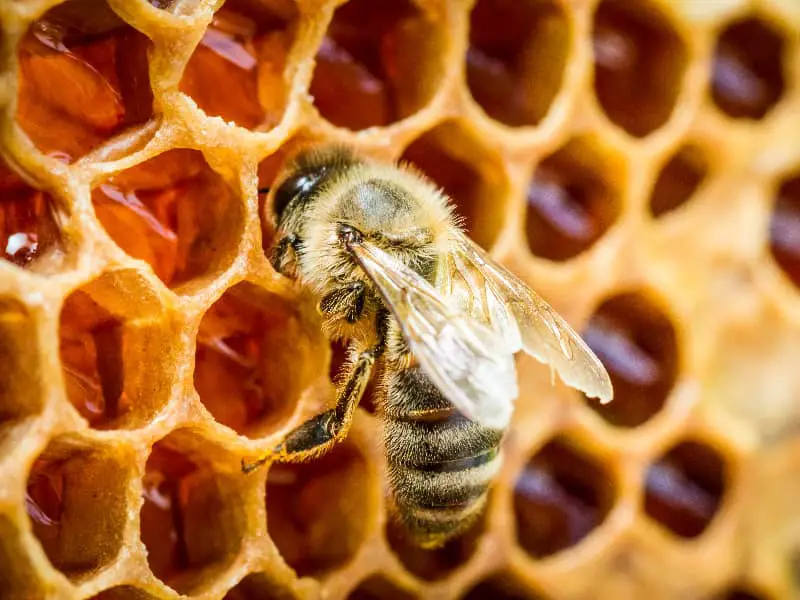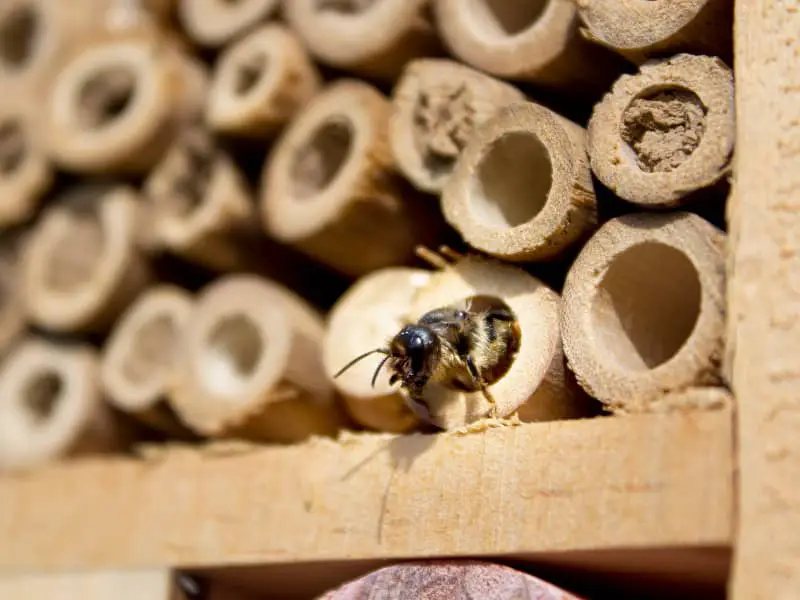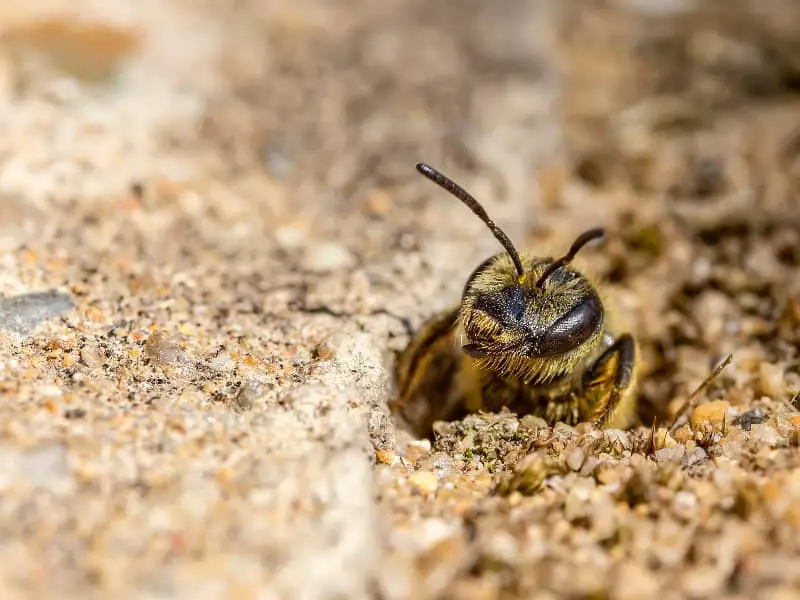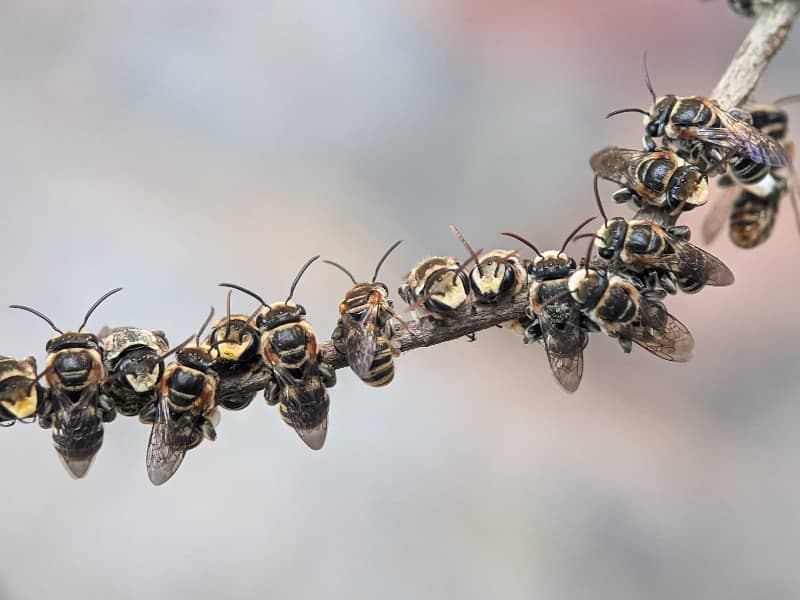
Stingless bees
Imagine a bee settling on your skin. You immediately think of the stinging pain that usually follows, don't you? But what if I told you that there are bees that can't sting? These stingless bees are a truly interesting phenomenon. In this blog article, we will look at this topic in detail.
- Stingless bees
- Bees without stingers, the biology
- How do stingless bees defend themselves?
- What role do stingless bees play in the ecosystem?
- Can stingless bees survive in different climate zones?
- Why are stingless bees less well known in some regions?
- How do stingless bees interact with other insects?
- Are there cultural meanings or traditions associated with stingless bees?
- What are the threats to stingless bees?
- How can we protect stingless bees?
- Conclusion: Stingless bees
Bees without stingers, the biology
A stinger is a defense mechanism that enables bees to protect themselves from predators. It has evolved over millions of years. In many bee species, this sting is equipped with a poison. But not all bees have such a stinging tool. Why is that?
The lack of a stinger in certain bee species can be attributed to various causes. Some researchers believe that these bees have developed other defense strategies. While a stinger is an effective way to deter predators, not all bees have this advantage.
Which bee species have no sting?
There are actually quite a number of bee species that are stingless. For example, most male bees, known as drones, belong to this category. They have no stinger because their main task is to mate with the queen and not to defend the nest.
Some tropical bee species, particularly in parts of Africa and South America, are also stingless. These bees, often called Meliponini, have a variety of adaptations that protect them from predators.
How do stingless bees defend themselves?
As they have no sting, you might think that stingless bees are defenseless. But that is far from the truth. These bees have developed other mechanisms to defend themselves. For example, some species release a sticky substance when threatened, which deters predators.
Other stingless bee species rely on camouflage or build their nests in places that are difficult to access. This allows them to hide effectively from predators. It is fascinating to see how nature finds ways to protect species without the familiar sting.
How does the absence of the stinger affect the way these bees live?
One might assume that bees without stingers have a more difficult life. However, the absence of the stinger actually has both advantages and disadvantages. Because these bees do not rely on the stinger as a defense mechanism, they often behave less aggressively. This can lead to them coping better in certain environments where more aggressive behavior would be problematic.
In addition, the lack of a stinger has an impact on the way these bees build their nests and raise their young. They have to be innovative and adapt to their environment in order to be successful despite the lack of sting.
Can stingless bees pollinate as effectively as their stingy relatives?
Yes, stingless bees are just as effective pollinators as their stingy counterparts. In some cases, they are even better! Some plants have evolved to be specifically pollinated by stingless bees. This shows once again how adaptive and amazing nature can be.
In some regions, stingless bees are even used for commercial pollination. They are particularly useful in areas where traditional honey bees have problems or where people are afraid of being stung.
Are stingless bees beneficial for humans?
Definitely! Apart from their role as pollinators, stingless bees are also important for honey production. In some regions, they produce a unique honey that is prized for its special taste and healing properties.
In addition, stingless bees are ideal for urban beekeeping projects due to their gentle nature. As they do not sting, they are particularly suitable for city dwellers who want to experience the joys of beekeeping without having to worry about stings.
How does communication of stingless bees differ from other bee species?
Communication is crucial in the bee kingdom. Bees use a combination of chemical, acoustic and visual signals to interact with each other. Stingless bees are no different. Although they do not have a stinger to sting with in certain situations, they still communicate efficiently with each other.
In many cases, stingless bees use pheromones to communicate with each other. These chemical signals are often used to mark territories, attract mates or alert them to danger. Interestingly, some stingless bee species have developed unique pheromones that distinguish them from their stingy relatives.
In addition to chemical communication, stingless bees also use dance movements. Yes, you read that right! Like the honeybee's famous dance language, some stingless bee species also use complex dance movements to communicate the location of food sources or other important information to their conspecifics.
What role do stingless bees play in the ecosystem?
Bees, whether stingless or not, play a crucial role in the ecosystem. Stingless bees are not only pollinators, but also an important part of the food chain. Many animals, from birds to other insects, rely on stingless bees as a food source.
As they are often found in tropical regions, stingless bees contribute to the health and diversity of these fragile ecosystems. They help maintain plant diversity and contribute to the propagation of many plant species. Without their pollinating work, many tropical plants could not survive.
Can stingless bees survive in different climate zones?
Stingless bees are primarily native to tropical and subtropical regions. However, this does not mean that they cannot survive in other climate zones. Like many other bee species, they adapt to their environment.
There are reports of stingless bees surviving and reproducing in temperate climates. This ability to adapt shows once again how resilient and adaptable bees can be, even without stingers.
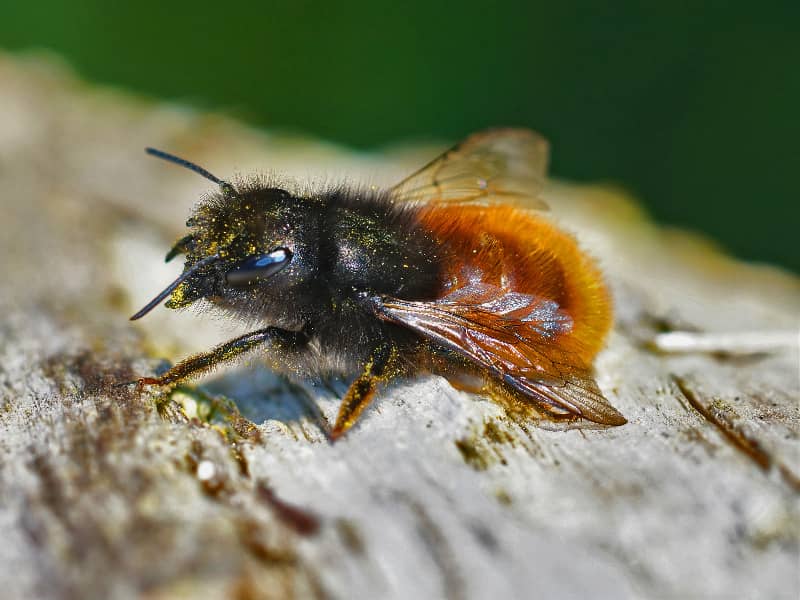
Why are stingless bees less well known in some regions?
Awareness of stingless bees is low in many parts of the world. One reason for this is that they are found in areas where commercial beekeeping is not so widespread. In addition, their nests are often well hidden and difficult to detect.
Another factor is the focus on the honey bee in research and beekeeping. Because honey bees are so important for honey production and the pollination of agricultural crops, they often receive more attention than their stingless relatives.
However, interest in stingless bees has been growing in recent years. Their advantages in urban beekeeping and their importance for biodiversity make them an interesting object of study for researchers and nature lovers alike.
How do stingless bees interact with other insects?
Interactions between stingless bees and other insects are an exciting field of study. Like all bees, stingless bees have to deal with a variety of insects, be they potential predators, competitors for resources or symbiotic partners.
For example, some stingless bee species have a special relationship with certain ant species. While ants are often seen as a threat to bees, some stingless bees benefit from a symbiotic relationship. The bees offer the ants food in the form of honeydew, while the ants in return protect the bees from other insect predators.
There are also examples of stingless bees competing with butterflies. Both insect species often rely on the same flower sources and there can be exciting "aerial battles" as they compete for access to these resources.
Are there cultural meanings or traditions associated with stingless bees?
In many cultures, especially in regions where stingless bees are native, these bees have a special cultural value. In some indigenous communities in South America and Africa, stingless bees and their honey have been prized for centuries.
The honey of stingless bees is often used not only as food, but also for medicinal and ceremonial purposes. It is sometimes regarded as a cure for certain diseases or used in religious ceremonies.
There are also legends and stories that attribute special characteristics or roles to stingless bees. They are often seen as messengers of the gods or as a sign of fertility and prosperity.
What are the threats to stingless bees?
Unfortunately, stingless bees, like many other insect species, are exposed to various threats. Deforestation and destruction of their natural habitats are one of the biggest threats. Without suitable nesting and food sources, these bee populations can decline dramatically.
Another problem is the use of pesticides in agriculture. Many pesticides are toxic to bees and can kill entire colonies or impair their ability to reproduce.
Climate change is also a challenge. Changes in temperature and precipitation patterns can affect the supply of flowers and thus the food sources for stingless bees.
How can we protect stingless bees?
Protecting stingless bees starts with awareness of their existence and importance. Education and awareness are crucial to sensitize people for the preservation of these fascinating creatures.
In many regions, conservation projects are being initiated to provide suitable habitats for stingless bees. This can be done by restoring natural habitats or by creating bee reserves.
Another important step is to reduce the use of pesticides and switch to bee-friendly agricultural practices. By choosing organic products, consumers can help to reduce the pressure on bee populations.
Jeder Einzelne kann auch im eigenen Garten oder Balkon bienenfreundliche Pflanzen anbauen und so stachellosen Bienen und anderen Bestäubern Nahrung und Unterschlupf bieten. Jede kleine Geste zählt, wenn es darum geht, diese wichtigen Bestäuber zu schützen.
Conclusion: Stingless bees
Stachellose Bienen sind ein unverzichtbarer Teil unseres globalen Ökosystems. Ihre Einzigartigkeit und Vielseitigkeit machen sie zu einem faszinierenden Studienobjekt und erinnern uns daran, wie komplex und wunderbar die Natur ist. Obwohl sie oft im Schatten ihrer stacheltragenden Verwandten stehen, spielen stachellose Bienen eine entscheidende Rolle bei der Bestäubung, in der Nahrungskette und in vielen kulturellen Traditionen weltweit.
Die Herausforderungen, denen sie gegenüberstehen, von Habitatverlust über Pestizideinsatz bis zu den Auswirkungen des Klimawandels, sind beunruhigend. Doch sie bieten uns auch die Gelegenheit, unsere Beziehung zur Natur zu überdenken und Maßnahmen zu ergreifen, um diese beeindruckenden Kreaturen zu schützen.
Die Faszination und Bedeutung stachelloser Bienen erinnert uns daran, dass in der Natur jedes Geschöpf, unabhängig von seiner Größe oder Bekanntheit, einen Wert und einen Zweck hat. Ihre Erhaltung ist nicht nur für sie selbst, sondern auch für uns Menschen und die Gesundheit unseres Planeten von entscheidender Bedeutung. Es ist unsere Verantwortung, uns über ihre Rolle zu informieren, ihre Bedrohungen zu erkennen und aktiv zum Schutz dieser bemerkenswerten Insekten beizutragen.
Author

-
Garden animal - A life with nature
Welcome to my animal blog! My name is Dirk and I am happy to take you on my journey through the fascinating world of animals and gardening.
Born 54 years ago, I have had an insatiable curiosity for the animal world around me since childhood. Although I have moved professionally in other industries, my true passion has always been animals and nature. It is remarkable how a small garden has become such an important part of my life.
Many of my fondest memories are associated with the animals that share our home. Whether it's the curious squirrels that scurry across the trees in the morning, the colorful variety of birds that visit our feeders, or the busy bees and butterflies that pollinate our flowers, every moment with them is invaluable to me.
This blog is my contribution to share my experiences, discoveries and insights with like-minded people. Here I will share stories of unforgettable encounters with animals, give tips on gardening and creating wildlife-friendly habitats, and take you on my journeys through nature.
Thank you so much for being here!
Cordial,
Dirk aka garden animal
Last posts
- 27. February 2024PetsVeganes Hundefutter – Grün und Gesund?
- 18. January 2024ChickensOregano für Hühner
- November 27, 2023HamsterDiurnal hamsters
- November 24, 2023HamsterHamster hammock

